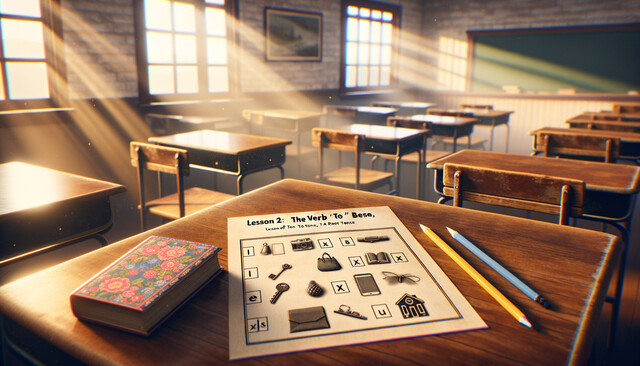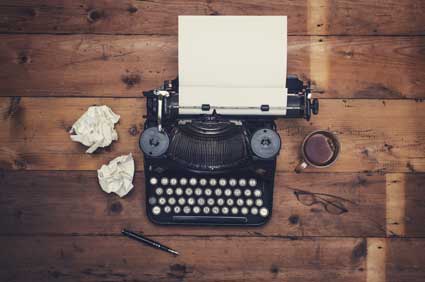Proofreading marks are a series of symbols and notations used to mark up or correct errors on both draft documents and typeset pages. In simpler terms, they are the marks that you will make within text that you are copyediting or proofreading to symbolize changes that need to be made to words, sentences, paragraphs, layout, or formatting.
One mark may symbolize splitting one word into two. Another may suggest a paragraph indentation or moving a row of text up. These are simply universal ways to quickly note the changes that need to be made without writing complete instructions for every error or change in the text.
Proofreaders' marks are used in two instances:
- To edit a body of text or to copyedit (copyeditors' marks)
- To proofread a body of work (proofreaders' marks)
The symbols or marks for copyediting and proofreading are almost identical, but may vary slightly at times. Later in this section, you'll view a list of some of the proofreading and copyediting marks that you'll use so that you'll become familiar with them.
Why You Use Proofreading and Copyediting Marks
Using copyediting or proofreading marks helps ensure consistency and improves communication between the copyeditor and author, publisher, proofreader or the proofreader and author and publisher. Without these marks, it can be unclear what change needs to be made or what the proofreader or copyeditor is trying to say to the author or publisher. Even if you are proofreading or editing your own work, making use of these marks will save you time and frustration when it comes time to make the actual changes.
Whether you are proofreading or copyediting, you will always put the marks in the text where the correction or change needs to be made. However, where you place any further explanation of these marks will depend on whether you are proofreading or copyediting.
In Proofreading
If you're proofreading, however, you will receive a body of work that is formatted and presented in the same way that it will be upon publication or distribution, minus any errors or corrections. That said, the body of work that a proofreader receives would not be double spaced. Make your marks within the body of text just as a copyeditor would, but carry your notations over to the margin since there is no space between lines.
A List of Proofreaders' Marks
Table 1 out of 4
Table 2 out of 4
Table 3 out of 4
Table 4 out of 4
You will constantly use proofreaders' marks whether you are proofreading or copyediting a body of work.
It is easy to tell you what your job is as a proofreader, but it's a little more difficult to tell you exactly how to do it. The reason is clear. Your job is finding errors and inconsistencies within a body of work. It's impossible for anyone to tell you where to find those errors, what errors you'll find, and exactly how to find them.
Proofreading skills take time and serious practice to master. You'll find that the more that you proofread, the more you'll work out your own methods and techniques. All you can hope to learn about any proofreading assignment is exactly what your specific job requires, what tools to use and how to use them, and ways to do the job as efficiently and effectively as possible.
Here are some tips to make you an even more capable proofreader:
- Always have a healthy sense of doubt. If something doesn't look right, check it and that goes for spelling, layout, or grammar. If you have one shred of doubt, then double check to make sure that it's either right or wrong.
- Read very slowly, and read every word. Beware! It's easy to start reading and pronouncing the words in front of you, but not really hear what you're saying. Pay attention to yourself and what you're saying as you read. And yes, read aloud.
- Read what is on the page, not what you think is there . This is a hard skill to acquire, especially if you are reading something that you wrote.
- Proofread a second time just to be sure.
Here are two things that you always need to remember when proofreading.
- Most errors in written work are made unconsciously, and most errors are overlooked unconsciously as well. What this means is this, if you have always misspelled "maintain", you're not going to view it as misspelled when you proofread a body of work, especially if it is your own.
- A split second of distraction from proofreading could cause you to overlook errors. The mind is mightier than the pen (or keyboard). If your thoughts stray or you are interrupted, it could cost you accuracy or consistency. Take a break if you're becoming even a little tired. Eliminate all potential distractions before you start working. By consistently doing both of these things, you will become a highly competent proofreader.
Nobody can tell you the exact methodology to use as you proofread a body of work. Eventually, you'll work out a method that works best for you. You have learned the best practices that you can employ as you proofread. These practices will make you as efficient and effective as possible.
When you copyedit a document, you may be asked to do a light, medium, or heavy edit. The type of edit you are asked to do will determine your job responsibilities.
Light Copyediting or Baseline Editing
Correct spelling, punctuation, and grammatical errors.
Correct incorrect usage of words.
Verify cross-references.
Make sure that spelling, grammar, capitalizations, and abbreviations, are consistent.
Make sure that lists are in the proper sequence, such as in alphabetical order.
Make note of the first references to figures and tables .
In light copyediting, you only check content to detect spots where copy is missing or inaccurate, such as misspellings or misuse. You do not rewrite text or add text to accomplish smoother transitions or for structure.
Medium Copyediting
Changing text and headers for parallel structure. Parallel structure is expressing similar ideas in similar ways. The following sentence is an example of parallel structure: She liked to run, jump, and skip home. This next sentence is not in parallel structure: She liked to run, jump, and begin skipping home.
Making note of inappropriate figures of speech.
Checking that any previews or summaries match the content.
In fiction manuscripts, making sure the plot progresses, checking the consistency in character traits and story lines.
Changing passive voice to active voice when it is required.
Making note of incorrect statements.
The difference between heavy and medium copyediting is the level of judgment and rewriting involved.
Heavy Copyediting or Substantive Editing
Getting rid of any wordiness.
Making transitions smoother and rearranging sentences to make the text easier to read.
Assigning new levels to headers to achieve logical structure.
Suggesting additions and deletions both at the sentence and paragraph levels.
In heavy copyediting, you will improve the flow of text and contribute to the overall quality of writing rather than just correct usage and grammar. When you do a heavy copyedit, you may also suggest changes rather than just making note of problems. You may also enforce a tone if it is requested by the author or publisher.
As a copyeditor, you will have different jobs that require different levels of editing. Even when you are copyediting your own writing, you will come to realize that certain pieces need more editing than others. With that said, it's important that you know the tasks involved in all three stages of copyediting. You may be asked to perform a heavy edit for a client or employer, or you may just need to do one on your own writing.
Learning how to copyedit is fairly easy. However, becoming an excellent copyeditor is a matter of choice. Throughout this section, you're going to learn tips and techniques to put you a step ahead of the average copyeditor. If you employ these tips and techniques, you will start out as a highly effective copyeditor who does a great job on every body of work that you edit.
As a copyeditor, you must:
Be able to spot grammatical and spelling errors.
Make sure that the body of work is clear. If your friend were reading it for their pleasure, would they be able to understand it? If you have a question about a certain aspect or about the work in general, be sure you get the answers before you send the work on.
Be able to detect potential libel or other common legal problems. You don't have to be a lawyer or have any legal experience to recognize that a statement may get someone into hot water. Every statement should be backed up with fact, not opinion, in these cases.
Below are some tips that will help you accomplish your job. These tips have nothing to do with your tasks as a copyeditor, but they will help you as you progress. Using these tips could even clue you in on when you need to consult your style guide or to do some research. Yes! They can make your job easier.
1. Ask yourself if the focus is clear after reading a body of work. Come up with some questions when you first start reading. See if those questions are answered by the end of the work.
2. Make sure that the point of the work is clear early on in the text.
3. Read the copy as is, but also read the copy with your changes. Sometimes problems can occur with your corrections, and you won't realize it until you read it aloud.
4. Simple is best. Cut out unneeded words and replace big, long words with similar ones when possible. Just be sure that you don't sacrifice accuracy or factualness.
5. Trim long quotes that ramble on and stray from the focus. Longwinded quotes are litter. Keep what is needed and discard the rest.
6. If you think there may be a legal problem with what is written, alert the author, publisher, or employer immediately.
7. Develop good habits. Review your style guide before you start editing. It will put you in the right frame of mind to make corrections.
Accuracy Checklist for Copyeditors
Spelling.
Numbers and math.
Locations and geography.
Names and titles.
Attributions.
How to Copyedit Newspaper and Magazine Articles
.
Use the proper terms and lingo for the area in which the readers live. You wouldn't use "mate" to refer to a friend in the U.S.A., but you would use it in Great Britain.
Remember that even headlines and decks should give new information.






























